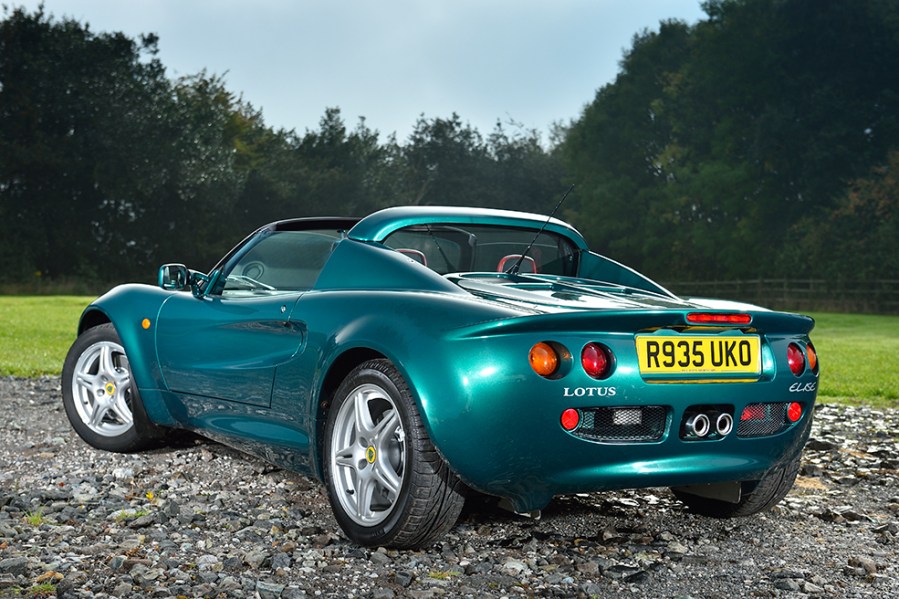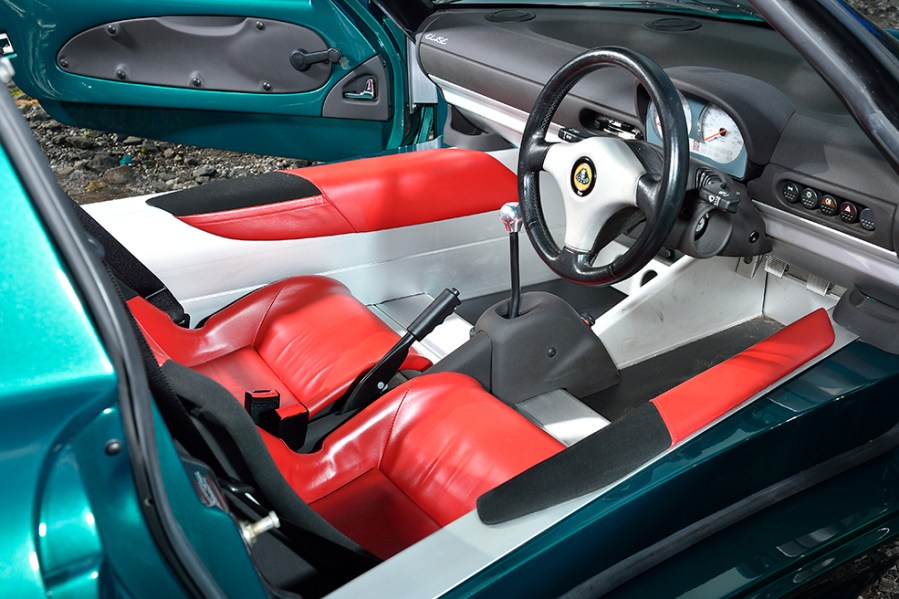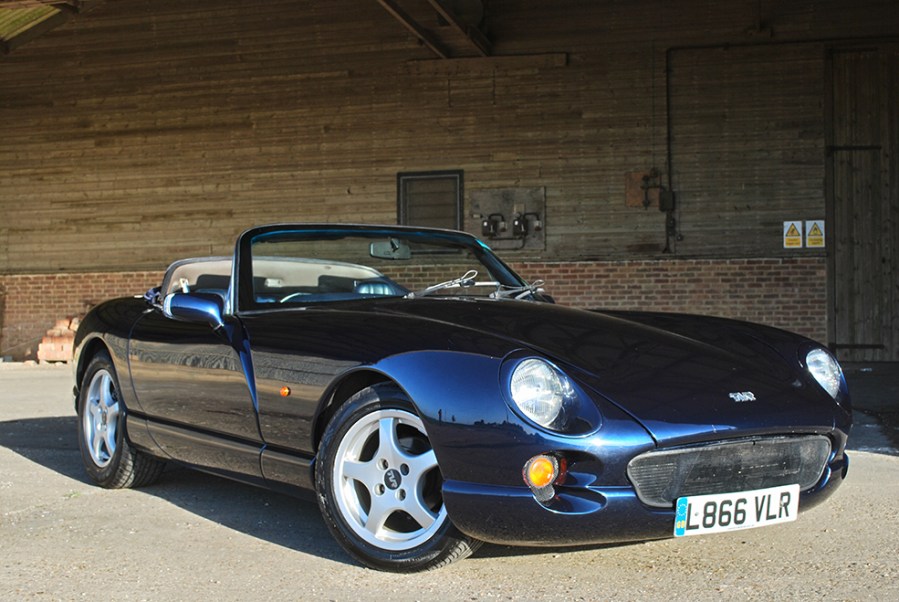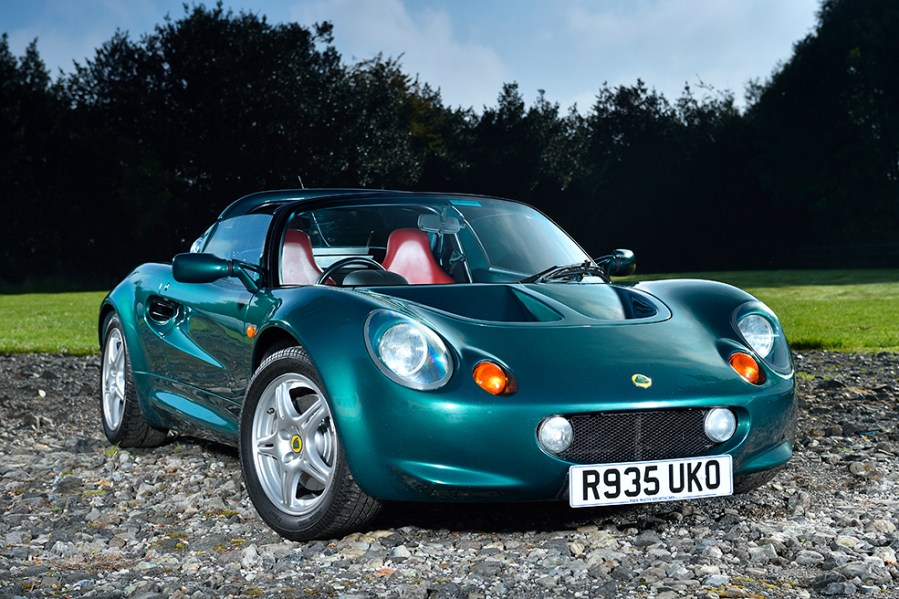Viewed as a classic almost as soon as it launched, the Lotus Elise S1 is a truly special sports car that entertains like few others. Here’s all you need to know
Images: Matt Woods, Paul Wager
The Elise, launched in 1996, became one of Lotus’ most successful and revered models. Named after Elisa Artioli, granddaughter of then-Chairman Romano Artioli, it embodied Colin Chapman’s ethos of lightness and simplicity, delivering an unrivalled driving experience.
Motoring magazines praised it, with Autocar calling it “the most technologically daring Lotus road car since the original Elite.” Designed by Julian Thompson, the Elise featured a GRP body and an advanced bonded aluminium chassis by Richard Rackham. Powered by Rover’s 1.8-litre K-Series engine, its 118bhp output sounds modest, but it propelled the lightweight roadster to 60mph in just 5.5 seconds. Handling was its real strength, complemented by a stripped-down, driver-focused cabin – all for £18,995.
More powerful versions followed, starting with 1997’s ultra-rare, track-focused Sport 190, which – as the name suggests – boasted 187 bhp and could go from 0-62mph in 4.4 seconds. Just 31 were made for the UK, converted post-sale by Lotus Special Vehicle Operations. The Sport 135 arrived in 1998, and 1999’s 111S added variable-valve timing and a close-ratio gearbox with 143bhp. The final version, the Sport 160, debuted in 2000, with only 337 produced from the total 10,619 S1s built.
Special editions included the Type 79 and Type 49 with their JPS and Gold Leaf liveries respectively, 1999’s Millennium edition, and the radical 340R, a track-focused variant without doors or a roof. The S1 remained in production until late 2000, when the S2 took over.

Bodywork
The Elise’s GRP bodywork requires expert repairs, so inspect it carefully. Look for star cracks, crazing, or poor past repairs. Paint bubbles from moisture can be costly to fix. Check under the front clamshell for damage from speed bumps. Replacements aren’t cheap – genuine Lotus clamshells cost around £3300, while aftermarket ones are £1500-£2000 new, plus painting and fitting. Panel gaps were decent from the factory, so misalignment may indicate past accident damage.
More crucial than bodywork is the chassis condition – serious issues are a deal-breaker. A ramp inspection is essential, removing under-trays to check for damage or poor repairs. Lotus doesn’t sell replacement chassis, and they weren’t designed for repairs, though minor fixes may be possible with expert advice. Corrosion can occur at the front wishbone mounts, and the rear steel subframe should be checked for rust—a galvanised replacement costs £1300 plus labour.
Headlights may suffer internal corrosion, and the hood, though functional, is fiddly – replacements cost £500-£600. The optional hardtop is valuable but should be checked for fit and rattles, as a new one costs over £1000.
Engine and transmission
The Elise’s K-Series engine, despite its reputation for cooling issues, can last with proper maintenance. Servicing is needed every 9000 miles, costing around £250 for a minor service and £650 for a major ‘C’ service, which includes a cambelt change. Most models require a belt swap at 54,000 miles (or four years), but the Sport 160 needs it at 36,000 miles (or three years). A patchy service history is a risk, so ensure the paperwork is complete.
Well-maintained cooling systems should be trouble-free, but overheating caused by the small coolant capacity, radiator damage, or failing coolant pipes can lead to head gasket failures. Early models had plastic dowels that allowed head movement, but most have now been upgraded with an improved gasket and steel dowels. Check for ‘mayonnaise’ under the oil filler cap as a warning sign. Maintaining proper coolant levels is crucial – a £150 level sensor kit is a worthwhile upgrade. Inspect the radiator and pipework for corrosion, as their front-mounted position makes them vulnerable. Clamshell removal makes replacement costly, so an uprated alloy radiator (£350) is a smart investment.
Other checks include oil leaks at the engine’s base and exhaust corrosion; a quality replacement starts at £500. Ask about engine modifications, as K-Series tuning options range from ECU remaps to full transplants, which can cost five figures and drastically alter the car’s character – an acquired taste, not one for purists.
The standard five-speed gearbox is durable, though track use can make it noisy on overrun, which isn’t a major issue. A rebuild costs around £1500, with stronger internals available. Changing oil every two years helps longevity. Sticky shifts can result from linkage or cable issues, which are simple fixes. A revised pivot can ease a stiff clutch pedal, but clutch replacement is labour-intensive. Finally, listen for a whining differential, as replacement is expensive.

Suspension, steering and brakes
The Elise’s double-wishbone suspension delivers an exceptional drive, but worn components ruin the experience. Though its light weight reduces strain, expect wear in ball joints and bushes – a full OEM wishbone bush set costs around £500 before fitting. Original Koni dampers were prone to leaks, and most have been replaced, often with Bilstein or Nitron units. A full set costs over £1000, so negotiate if they need replacing. While upgrades are possible, they should be approached carefully to avoid compromising handling. Steering is a key part of the Elise’s dynamics; worn ball joints and track rod ends are cheap to replace, but a new genuine steering rack costs £800. A specialist geometry check is highly recommended.
Early models had Metal Matrix Composite brake discs, but most now have conventional cast iron ones – check for wear or corrosion. A full set with uprated pads costs about £400. Lightly used cars may have seized callipers (£420 new from Lotus), and brake fluid should be changed every two years. Failed wheel bearings are inexpensive to replace, with original front ones costing around £130.
Interior, trim and electrics
The Elise’s simple cabin makes wear easy to spot – check for scuffed seat bolsters, sills, and water-damaged leather. Some trim is scarce, so don’t assume fixes will be easy; second hand part sourcing may be necessary.
Electrics are basic, but ensure the Vauxhall-sourced column stalks function properly. More crucial is the Stack instrument panel – both gauges must work, as Lotus doesn’t supply replacements. However, 213 Performance in Oxfordshire can repair them. Manual window winders can stiffen and break, so lubricate them to prevent issues. If air conditioning is fitted, verify its function. While it may not be essential for occasional drives, some replacement parts are no longer available.

Lotus Elise: our verdict
Few cars achieve instant-classic status, but the Elise did—and it remains just as special today. It set a benchmark for handling and poise that rivals struggled to match, reviving Lotus’ reputation for lightweight, thrilling sports cars. Specialist support, club backing and parts supply are all strong, so buy wisely and you should have a cracking sports car that’s relatively easy to own and keep in fine fettle.
With production of the most recent models having ended in 2021, interest in the Elise has surged, driving up prices. Finding one under £16,000 is now difficult. A tired 118bhp model with high mileage needing TLC starts at £10,000, while a well-kept, original example can approach breach £20,000. Pristine low-mileage cars fetch £25,000-£30,000. Expect to pay over £20,000 for a good 111S, while a Sport 160 will likely exceed £30,000.
Lotus Elise timeline
1996
Lotus Elise launched in June with 118bhp K-Series
1997
Sport 190 track package offered, boosting power to 187bhp
1998
Elise Sport 135 launched in November with 135bhp engine, close-ratio gearbox, sports exhaust and unique graphics. 50th Anniversary Edition also launched, finished in green with gold wheels, gold decals, hardtop and leather seats – all 50 units sell quickly
1999
Elise 111S with VVC engine, close-ratio gearbox and new exhaust launched in March. Type 49 with classic red/gold/white livery launched in October. Lotus Elise Heritage / Type 79 also introduced, with 22 RHD cars built, and Millenium Edition launched. Extreme 340R offered with minimal bodywork and 177bhp (340 units produced)
2000
Sport 160 model launched, combing the Sport 135 spec with a more powerful engine. Exige coupe launched in July. New revised Series 2 car announced in October, replacing the S1
Lotus Elise alternatives
TVR Chimaera
If you want a British roadster of the 1990s with a thrilling driving experience, the much-undervalued TVR Chimaera makes a compelling Elise alternative. Truly rapid with an intoxicating V8 howl to match and better practicality than the Lotus, the Chimaera can’t match the Elise for handling but is just as memorable.

Porsche Boxster
If you want a mid-engined roadster that’s just a bit more refined, the Porsche Boxster is for you. Combining excellent handling and dynamics with a lovely flat-six powerplant – the ‘S’ variant offering better performance than any S1 Elise – the ‘baby Porsche’ also looks great value next to the Lotus.















